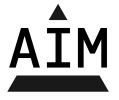
Table of Contents
The current era is of technology. It refers to all new innovations used for
betterment of society. So it is the demand that it should be used in education
also. By keeping this view, now it is shifting to education also to make
teaching-learning process more effective and efficient. Students’ learning can improve
with the help of instructional technology. Has instructional technology any effect on
students’ behaviour? How educational technology helpful for long-lasting learning?
etc. etc. These questions should be answered properly if we want to improve quality of
instruction and to achieve the objectives of education. 200 students of secondary classes
from arts and science streams were randomly selected from five Government Secondary
Schools of Wah Cantt. A self-developed questionnaire was prepared by analyzing
literature. t-test and product moment correlation method was applied for data analyses.
Results revealed that there is an impact of audio-visual aids on students’ behavior,
positive interaction between teachers and pupil is possible, learning will be quick and
creativity is possible. It keeps students attentive, students’ performance can be improved
and learning will be easy. Positive, quick and easy transfer of learning is possible which
has permanent impressions on the minds of the students. Positive interaction between
teachers, students and subject-matter and students’ creativity is enhanced due to
instructional aids.
Read More: http://isoss.net/downloads/Proc10thconf.pdf
Introduction
When it applies to educational setting, it is termed as educational
technology and when it is used for instruction, it is called as instructional technology.
ET has both general and specialized meanings. For the layman and
educators, it means use of audio-visual aids for instruction. Specialists who teach
ET as a subject prefer to use word “instructional technology” because
it is the practical use of ET in classroom for instruction. IT shows two aspects i.e. process and the particular devices that teachers employ
in classroom for the clarification and enhancement of concepts.
According to the Association for Educational Communications and Technology,
“Instructional technology is a complex, integrated process involving people, processes,
procedures, ideas, machines, devices and organization for analyzing problems and
devising, implementing, evaluating and managing solutions to the concerned problems in
those situations in which learning is purposive and controlled”.
However IT, ET, audio-visual aids, educational communication technology, audio-visual media, learning resources,
instructional or educational media are used interchangeably as they have same purpose
i.e. achievement of objectives and goals; and improvement in students’ behavior by
learning.
Read More: https://education.aim986.com/instructional-technology/
INSTRUCTIONAL TECHNOLOGY — WHY?
PSYCHOLOGICAL PERSPECTIVES
Cobun (1968) (as cited in Aggarwal, 1995) conducted a research in educational
technology and pointed out that:
1 per cent learning from sense of taste
1.5 per cent learning from sense of touch
3.5 per cent learning from sense of smell
11 per cent learning from sense of hearing
83 per cent learning from sense of sight
Cobun (1968) (as cited in Aggarwal, 1995) research showed that when sense
experiences are involved in learning, understanding becomes nearly constant and people
generally remember:
10 per cent when reading
20 per cent when hearing
30 per cent when seeing
50 per cent when hearing and seeing
70 per cent when saying
90 per cent when saying as they are doing
Instructional technology is only the tools who give the chance to students to actively
participate in learning. It has been recognized that when our various senses are involved
in any activity, reception of messages become increase.
INSTRUCTIONAL TECHNOLOGY AND STUDENTS BEHAVIOR
The main purpose of applying instructional technology in classroom is to maximize
the learning outcomes. Learning is the burning issue for all educational technologists but
the answer is still uncertain that how learning will be increased. Most of the researches
are based on comparative studies in which experimental groups teach with certain
instructional technology i.e. T.V., computer or any device and control groups take
instruction without them. At the end of experiment, researchers compare the performance
of experimental and control groups and difference attributes to the dependent variable.
Some researchers reviewed a lot of literature and come to the conclusion that
whatever instructional technology i.e. T.V., computer, charts, boards, maps, models etc.
is employed by the teachers, ultimately the students’ level of understanding will increase.
Both experimental and descriptive studies revealed that proper use of instructional
technology create positive interaction between students and students and teachers and
students. Possibility of quick learning, creative work and positive impact of teaching is
increased. They keep the students attentive and busy in classroom. With the help of them,
opportunities are offered to students to exchange their ideas with other class fellows.
Students’ performance is also improved by using them appropriately.

